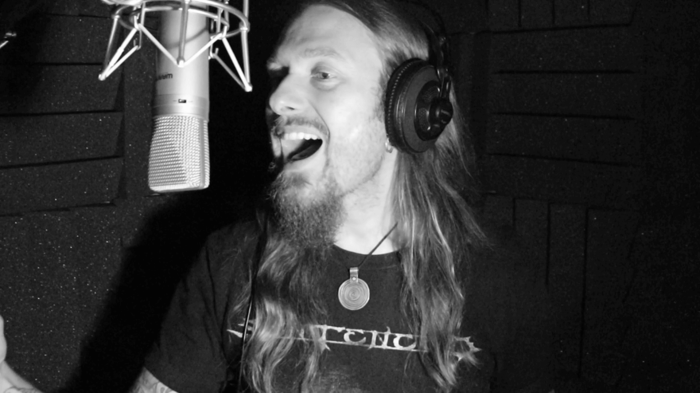So you're looking for singing techniques beginners can use.
Not the crazy stuff like Vowel Modification or Compression.
Actual beginner singing techniques.
From the start.
Day 1 kind of stuff.
You've definitely come the right place - because I'm about to blow your mind with just how much progress you can make as a beginner with these 3 singing techniques beginners can start using right now!
You see, singing isn't just about how much time you spend doing things, it's really about approaching them in the RIGHT way.
You could literally spend hours each day going through lip trills and scales and see ZERO progress because you're not engaging the CT muscle properly, or because you're not placing your voice in the right way.
So listen up, you're about to get the cold hard truth.
Blunt honesty.
Singing is EASY... but learning HOW to do it is a total fucking nightmare.
I'm serious.
Have you SEEN how many voice training videos that there are on YouTube?
And not ONE of them has actually helped you sing any better, right?
They make you feel like you 'get it', they make you feel all warm and fuzzy about that channel, or the COACH'S voice - but absolutely nada to help your own singing.
Let's face it, learning how to sing online is a bit of a shitshow.
But it's about to change for you.
The very first thing we're going to do is learn to connect Chest and Head Voice.
#1 - Connect chest and head voice
You might feel like there is TWO voices - chest voice and falsetto, but the truth is a little more complex than that.
We've really got two different muscle groups that control our chest and head voice, but they have what is called an 'antagonistic' relationship; meaning, they actually pull against each other in the middle of your voice.
And this is exactly what that mystical "mix voice" you keep hearing about is - a balance of chest and head voice musculature and tonality.
The tonal depth of chest with the extensive range afforded by your head voice.
Now, you'll notice I've mentioned FOUR registers to you at this point; falsetto, head voice, chest voice and mixed voice, so let me explain exactly what they are.
Falsetto - that flutey, airy sound that let's you sing REALLY high is caused by a false closure of your vocal folds (your true vocal folds, not your false folds) - very similar to the harmonic you'll get on the 12th fret of a guitar string when you don't actually fret it fully. Falsetto isn't a true vocal register and is the only one that doesn't "connect" to the others.
Head Voice - now we're talking. Head voice occurs when you contract the CT muscles; the cricothyroid, which sit underneath and wrap around the larynx. These muscles "stretch" the vocal folds long and thin to allow them to vibrate at a higher speed and hence higher pitch. Head voice is a 'full' vocal register, meaning that you can develop full voice with connection to chest voice by using it in the right way. Most beginner singers get confused by falsetto and head voice, but believe me - head voice and falsetto aren't the same thing at all, and it's important for you to understand. One of the biggest reasons that beginner singers struggle to get better at singing, even when they're trying really hard and practicing like crazy, is because they're "avoiding" their head voice and not engaging the CT muscle at all. This happens because they don't want to sing in falsetto, but they're confusing the two. Ergo, try not to overthink your registers too much at this point; you're probably not really aware of what your head voice really is at this point, so it's best not to avoid it by mistake by agonising over falsetto.
Chest Voice - chest voice occurs when you contract the TA muscles; the thyroarytenoid. These muscles actually make up the body of your vocal folds, and when contracted, they literally contract the vocal folds themselves and make them short and fat like a thick square. This adds depth and thickness both in a physical and tonal sense - but you won't get very high with your vocal folds in this coordination.
Mixed Voice - your TRUE singing voice occurs when you balance both the TA and CT muscles together to create a massive "bridge" between your lowest and your highest notes, all connected as one beautiful resonant register from top to bottom and vice versa.
The key to developing your mixed voice is to learn to connect chest and head voice right now using this free singing tutorial - How to connect chest and head voice [VIDEO]
#2 - Tonal Intent
When you think of tone, you probably think of how 'nice' or 'cool' someone's voice sounds. But the truth is, each register of the voice has it's own tonal control mechanism, meaning, by going for a specific tone you can actually control which muscles are dominant within the vocal folds and ultimately how strong and powerful your voice is; all by altering your tonality.
A great example of this is mixed voice.
Mixed voice doesn't sound like chest voice, and it doesn't sound like head voice - it really sounds like something in the middle, or even something totally different depending on how you're using it.
I like to think of mixed voice as "classroom voice" - you know, the voice you would use to get the attention of a bunch of kids in a classroom; assertive but pleasant.
You're not going to yell and scream at the little darlings, because they'll cry, but at the same time you're not going to speak as quietly as a mouse and hope they listen - they'll walk all over you.
The key here is to sing with a young but assertive tone that isn't weak, but isn't yelly.
Watch this video to learn exactly how to sing with Tonal Intent - Tonal Intent [VIDEO]
#3 - The Vocal Blueprint
Did you know that there is actually a BLUEPRINT for your singing voice?
An "instruction manual" that tells you exactly which vowel to sing, how to sing it, where to place your tongue, what shape and size to have the soft palate and even what tonality to go for in each register?
No?
I didn't either - noone ever told me that learning how to sing was THIS easy.
^ I guess I probably wouldn't have kept going to singing lessons every week for nearly 10 years if I nailed this first go and had all the information upfront like you're about to, right??
But this blueprint has absolutely changed my LIFE as a singer - and I'm about to tell you why.
Watch this video below to learn about the vocal blueprint and how it's going to help you reach your goals as a singer.
Best of all, add your details below and I'll give you my own personal vocal blueprint; the "instruction manual" for how your voice really works - this blueprint has absolutely changed my life as a singer and is the result of 20 years study and also the 10 years of expertise I have developed as a professional voice coach.
Watch the video below:
![Rock Singing Lessons [How to REALLY sing rock and metal]](https://dropinblog.net/cdn-cgi/image/fit=scale-down,width=700/34244329/files/featured/pxfuel_com.jpg)

